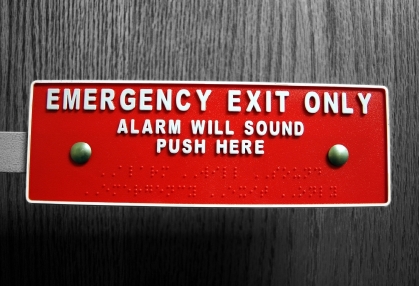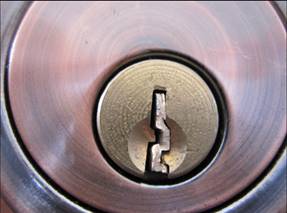How Can I Adjust My Door’s Closing Speed?
A properly sized and adjusted closer is critical for security of your building. An improperly adjusted door may slam, blow open with the wind, slam into the wall when opened or never quite shut to properly latch and lock. Slamming can loosen the attaching bolts and could result in the heavy door closer falling off and landing on someone passing thru the door! If you have a problem with a door closer it is VERY important to get it checked and repaired.
Commercial door closers may have several adjustments available. I wish there were some consistency in labeling and adjusting but very often there is no marking at all on the door closer adjustment valves; hopefully, your closer will have the valves marked, but sometimes it is a bit of a guessing game.
Common adjustments can be made to:
 Sweep or Swing Speed — the speed that the door closes from full open position to between 3 and 10 degrees of full closed position.
Sweep or Swing Speed — the speed that the door closes from full open position to between 3 and 10 degrees of full closed position.
Latch Speed — the speed the door finishes closing in the last 3 to 10 degrees. It should bring the door to latch point but never slam the door.
Back Check — the resistance at the end of the sweep or open position, so that the door cannot be slammed into the wall or obstacle behind it.
Spring Adjustment — many closers have an adjustable Spring so they can produce a range of opening and closing force.
Delayed Action — an option on some devices to delay the closing speed from approximately 180 to 70 degrees of door opening range.
Door Closer Size — Door Closers are rated by opening/closing force. The “Size” ratings are from #1 to #6, with Size #1 the weakest strength of 2 lbs and Size #6 the strongest at 14 lbs. Some door closers are adjustable and will accommodate a range of size ratings.
Adjusting the Door Closer
General rule for non-delayed closers is that they fully close in 7-8 seconds. To adjust the door closer you will need the proper size Allen Wrench or Hex key but some door closers use a flat head or Philips screwdriver to tighten or loosen valves. You may have to remove the “dress cover” before you can see the adjustment valves. Test the door over and over to determine which speed/force needs to be adjusted. Start with very small turns (1/8”) because a little turn can make a big change. Be prepared to get up and down from the ladder often to check your adjustments.
Counter-clockwise usually increases the speed or resistance and Clock wise decreases it. If the door closer has Spring Adjustment it is most often a large nut on the end of the closer body. To increase the spring power turn clock wise. NOTE: Loosening any valve too much, to the point where it becomes moderately difficult to loosen, could break your door closer seals and ruin the door closer.
When do you need a new door closer?
- If oil is leaking from your door closer, throw it away and buy a new one.
- If you cannot adjust the door to make it stop slamming, either the fluid has leaked out or the valve seals are worn out. Replace it.
- If the door closer has no spring tension and the spring tension adjustment turns round and round with no effect, the spring is broken the door closer must be replaced.
Feel free to contact us if you have more questions!


